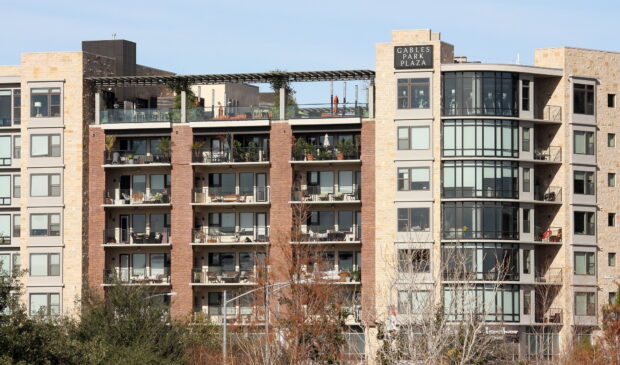Are rents falling? Apartment association sees construction, weak demand causing ‘negative rent growth’
Monday, September 11, 2023 by
Chad Swiatecki A combination of softer demand by renters and new multifamily apartment units completing construction has caused some lowering of rents in the Austin market, according to members of the Austin Apartment Association.
At a series of panel discussions last week, the appearance of “negative rent growth” after years of upward movement was a topic of much discussion. With construction of new communities starting to catch up to the strong demand surge that began five years ago, association members said the market is likely to see flat or falling rents in the years to come.
“Demand has been pretty muted now for really about a year and a half, maybe a little more than that, and so the new construction activity combined with that needed demand has really brought occupancy back down not only to a normal level before the run-up in 2021, but actually to below where they were going into the pandemic,” said Jordan Brooks, senior market analyst with ALN Apartment Data.
Brooks said apartment construction forecasts show a substantial growth in new units through at least early 2025, with surrounding cities such as Pflugerville and Round Rock growing as well to help address the hunger for affordable housing in Central Texas.
“In some markets you see elevated new construction, but it’s really focused in one or two submarkets. It tends to be the downtown area and kind of the most expensive submarket, so it’s hard to bring new supply online that’s not really in that ultra-premium space,” he said. “What we’re seeing in Austin is a lot of development activity in the suburban and periphery areas. Pflugerville in particular stood out, but the Round Rock area and San Marcos really grew as well.”
For apartments that are affordable according to federal guidelines, association members said there is still difficulty in keeping up with demand, though Austin’s high median family income levels can make a $250,000 home qualify as affordable.
Crystal Moya, regional vice president with NRP Group, which has about 3,000 units in the Austin area, said she and others plan to continue to push for state and local policy changes that make it more financially feasible to built affordable units.
“There’s changes that are made either at the state or local level that create barriers to the development of cheaper housing, and those are unintended consequences that later will impact the affordability,” she said. “It becomes a lot harder to underwrite a deal because you’re either having to add more staff or add certain building mechanisms such as elevators, or going green, and then that makes everything more expensive. It makes deals not work.”
Moya said Austin’s programs such as SMART Housing and the Affordability Unlocked policy suite have started to reduce costs and eliminate planning and zoning barriers that for years have added time and carrying costs in the millions of dollars for projects intended to be affordable.
She said she and other association members are encouraged by the ongoing review to the city’s site plan approval process that could further reduce the time needed to move a project from concept to completed construction.
“We know we need to keep talking to the true subject matter experts, people that are working day in and day out on developing these affordable deals. Whether it’s a low-income housing tax credit 4 percent or 9 percent deal or it’s a public facility corporation that’s being put together through a public-private partnership … we have programs in place that are designed to help and incentivize developers to create more affordable housing,” she said. “It’s incumbent upon those in the industry, residents and landlords alike, to advocate to maintain housing affordability because as insurance costs increase, as real estate, property taxes increase, as the cost to operate, such as supplies and just the labor alone, as all of that increases, all of those costs end up coming back to the renter.”
Photo made available through a Creative Commons license.
The Austin Monitor’s work is made possible by donations from the community. Though our reporting covers donors from time to time, we are careful to keep business and editorial efforts separate while maintaining transparency. A complete list of donors is available here, and our code of ethics is explained here.
You're a community leader
And we’re honored you look to us for serious, in-depth news. You know a strong community needs local and dedicated watchdog reporting. We’re here for you and that won’t change. Now will you take the powerful next step and support our nonprofit news organization?










